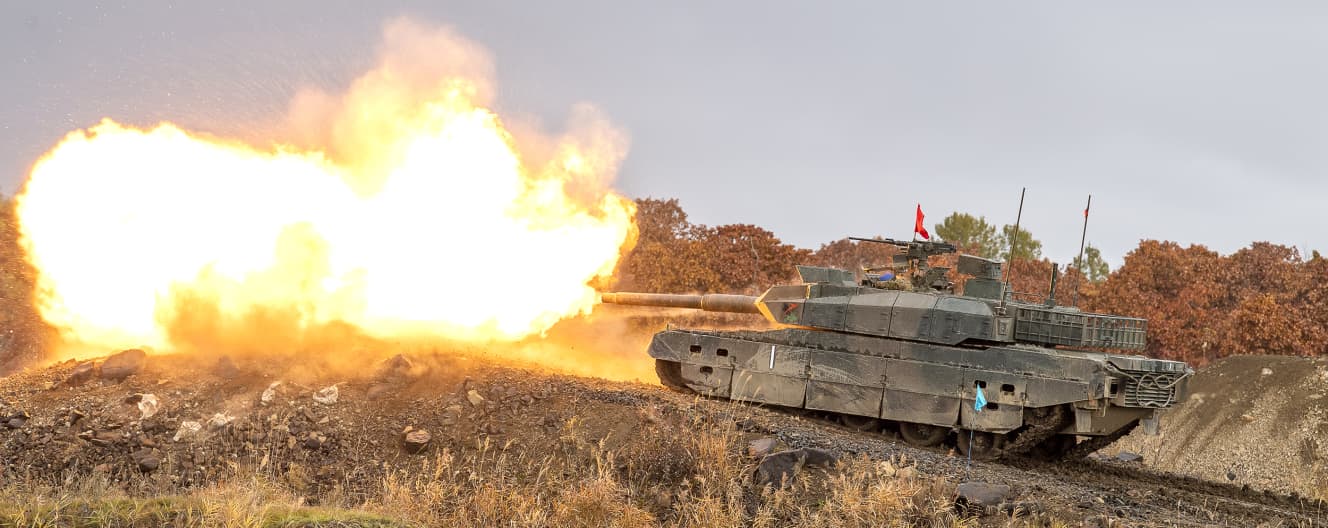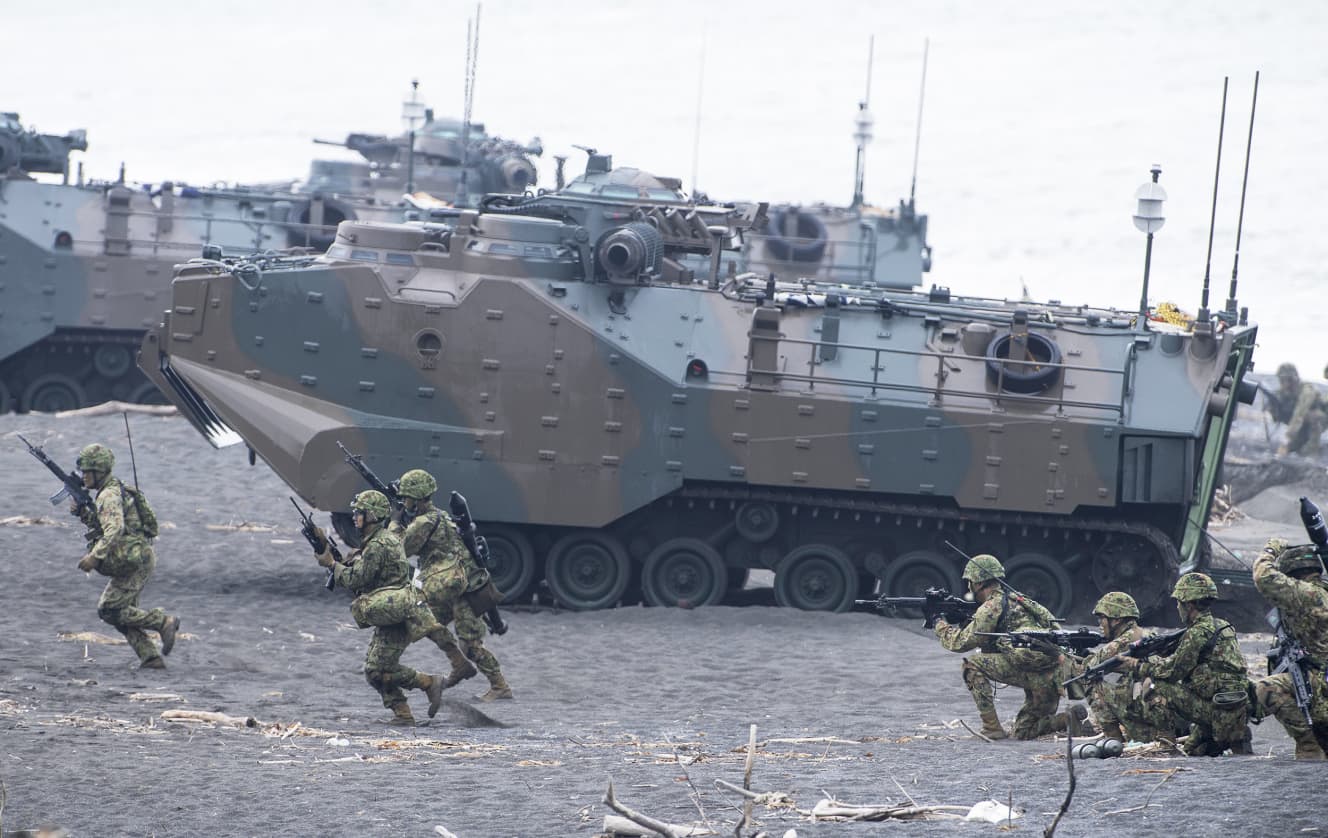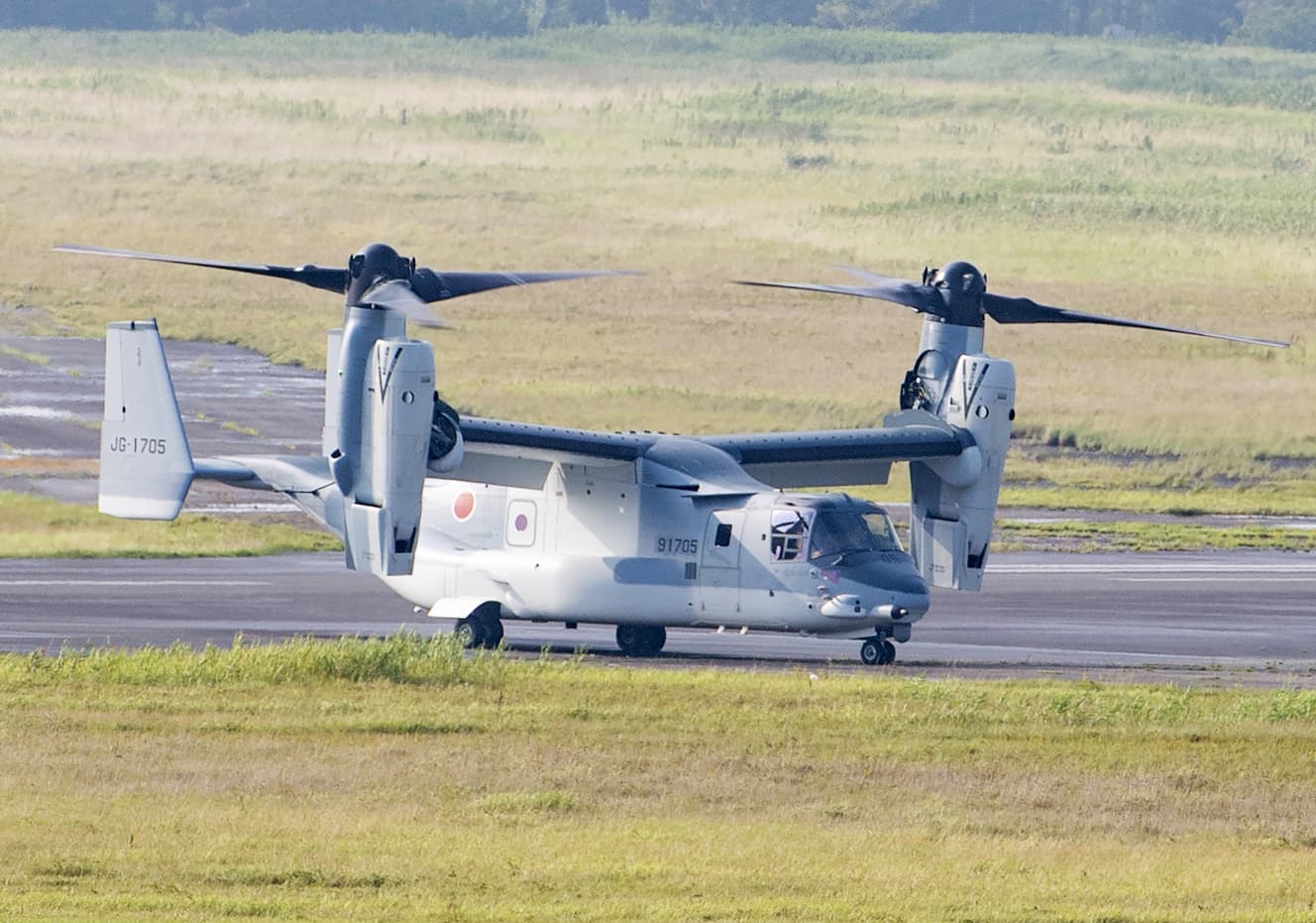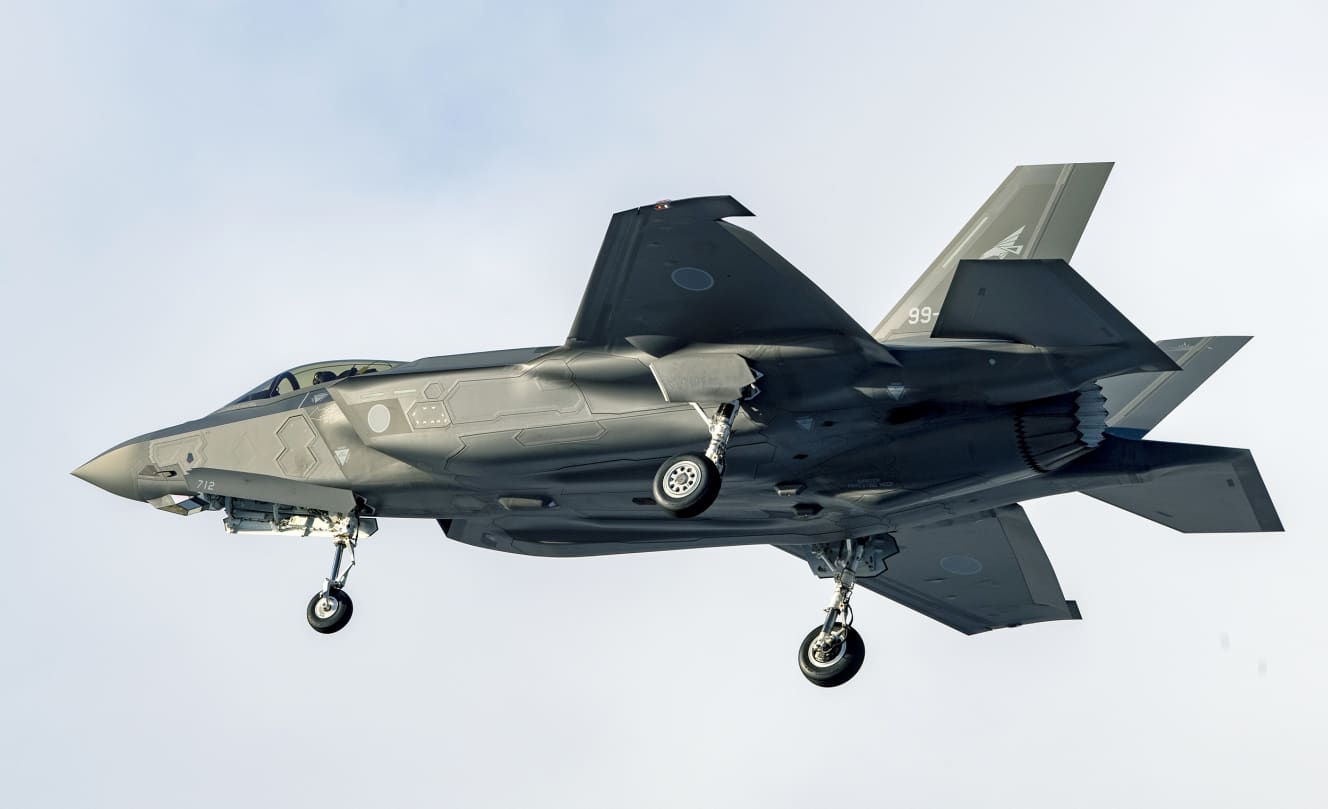Confessions of an active Self-Defense Force officer: “The dangerous situation happening on the front lines of Japan’s national defense right now.
The devastation in Ukraine is no one else's problem: "The U.S. military will not move" in the two-front operation in Hokkaido and the Senkaku Islands, "Naked nuclear power plants" are easy targets, and Osprey and aircraft carriers "are struggling to secure crews.

The security environment surrounding Japan is becoming more severe every day: Russia’s invasion of Ukraine in defiance of the international community, North Korea’s missile launches that continue unabated, and China’s hegemonic maritime expansion.
In response to these increasingly concrete threats, the Ministry of Defense has allocated 5,479.7 billion yen in its budget request for FY2010. This is the largest defense budget in history. Military journalist Shinichi Kiyotani takes a stab at the issue.
”It is only the main budget and does not include a supplementary budget.” In FY2009, there is a supplementary budget of nearly 800 billion yen. The Defense Ministry’s use of money is bullshit. It is an act of betrayal not only to the public but also to the Self-Defense Forces personnel in the field.”
Why is an increase in defense spending a betrayal? A Defense Ministry official laments, “It is not accompanied by substance.
It’s just a big amount of money. The Ministry of Defense basically does not negotiate discounts on purchases of weapons and other items from overseas. They leave it completely up to the trading companies and buy at the price they say they will pay. There is a position called “Specialist Officer” in each department of the Ministry of Defense, but it is in name only. I was suddenly assigned to a position as a “specialist officer” in a field I had never worked in. I’ve never even read a single book related to it, let alone researched it. ……”
Earlier, Mr. Kiyotani likened the Japanese defense situation to this. He likened the situation to a “sukiyaki hot pot with no ingredients at all, but with a few pieces of very expensive American beef in it.
In this issue of FRIDAY, five active duty Japan Self-Defense Force officers who are concerned about their country appear. They talked about the chilly state of Japan’s national defense.
U.S. Forces Will Not Come to Senkaku Incident
Self-Defense Force officer A in his 40s: “ When I see the devastation in Ukraine, I think, ‘Tomorrow is my own day.
A 30-something ground Self-Defense Force officer B: “ No, really. Russia’s invasion of Hokkaido and China’s invasion of the Senkaku Islands have suddenly become more realistic than ever before.
A 40-something Air Self-Defense Force officer C. “ The Hokkaido invasion was a story of the former Soviet Union era, and the main scenario of the last decade or so has been the landing of Chinese troops in the Senkakus. Successive LDP cabinets have repeatedly checked with the U.S. to see if the security treaty applies to the Senkakus, but after seeing how they handled the recent invasion of Ukraine, there is little hope. It’s hard to imagine the U.S. military coming to the Senkakus in the event of a Senkaku contingency.”
D, a 30-something ground Self-Defense official: “ I shudder to think what would happen if a two-front operation is launched in Hokkaido and the Senkakus. However, if China were to invade, it would be Taiwan first. If the logic of dispatching troops to maintain peace at the request of pro-Russian factions in eastern Ukraine works, it could be applied to Taiwan as well.
E., a 30-something maritime self-defense officer: “ It is eerie that China and Russia are holding hands so tightly. Because of its grip on China, Russia is able to concentrate its forces in the west with peace of mind.
C “ It was eerie that a helicopter believed to be a Russian aircraft violated our airspace off the southeast coast of the Nemuro Peninsula in Hokkaido on March 2. Air Self-Defense Force fighter jets were scrambled (scrambled), but ……”
D “ Both your notification that you were approaching the airspace and your warning that you were trespassing were ignored, weren’t they?”
A. “ Speaking of defending the skies, what about the introduction of the state-of-the-art F-35 fighter jet?”
C “ It is highly stealthy and has very high flight capabilities. But it is also …… expensive. We should have proceeded more carefully before the introduction of the aircraft. 2.5 trillion yen was paid to buy 147 aircraft, but after the public criticized it as ‘too expensive,’ we decided to go ahead with the introduction of the aircraft. Suddenly, each plane became about 1 billion yen cheaper. In total, the price was reduced by about 150 billion yen. It seems that the Ministry of Defense reluctantly negotiated with the Ministry of Finance, and Lockheed Martin agreed to lower the price. In other words, they had not negotiated a price reduction until now.
E “ There are a lot of places where I would like to see more money spent. Japan’s main fighter, the F-15, is a fighter from the 1970s. We upgraded the internal systems, such as the instruments, and are still using them today, in 2010.
D “ The airframe design itself is old, so there are limits to upgrades, aren’t there?”
C “ China and Russia are developing newer and newer fighters, and they are completely leaving us behind. We are not qualified to laugh at the old weapons North Korea is using.”
B “ I hear that the early F-15s can no longer even be upgraded.”
A “ The Air Self-Defense Force has modified the F-15 to be able to carry standoff missiles for anti-ship and anti-ground use. It’s very realistic that we’re getting close to abandoning the air-to-air fight.”
E “ You can’t win with air-to-air. In January, an F-15 took off from Komatsu Air Base (Ishikawa Prefecture) and crashed, killing two pilots. I can’t say for sure since the results of the investigation are not yet available, but there are too many unexplained points.
B “ Possible causes are airframe trouble, lightning, or vertigo.
A “ The F-15 is an older aircraft, so it just hasn’t been in an …… accident, but vertigo happens a lot?”
C “ I have experienced vertigo many times myself, but the easiest time to fall into it is when flying in cloudy weather, in the clouds, or in the dark of night. Especially at night, starlight and lights from fishing boats reflect off the sea, making the surface of the sea look like the night sky and making it difficult to see up and down. When you are in that state, you can’t trust your instruments.”
First postwar aircraft carrier is “at capacity”
B “ I heard that the first postwar aircraft carrier ‘Izumo’ will be converted to an aircraft carrier by refurbishing the existing destroyer ‘Izumo’. ……”
E “ That’s the big problem. At the moment, Izumo has only about half of its 500-person capacity, or about the mid-200s, on board. If we convert the ship into an aircraft carrier, we will need more crew members, including aircraft mechanics, but where in the world are we going to get them? At this point, we are already at capacity. ……”
A “ In the end, we end up competing for people inside the IDF. ……”
E “ For example, the three squads (engine department) in charge of engines have had their manpower reduced due to the engine automation, but they still need manpower for maintenance, inspection, and cleaning. So, we have to get personnel from other squads. It’s like an octopus eating its own legs to stay alive.
C “ The “Izumo” was to be equipped with the F-35B, a short takeoff and vertical landing type of the F-35, and the training of personnel began, but again, the lack of manpower became a bottleneck. The Maritime Self-Defense Force was going to operate the aircraft, but in the end, they could not gather the manpower, and because they could not ‘train the personnel,’ the Air Self-Defense Force, where the conventional F-35 is deployed, was put in charge.”
E “ Then the question becomes, who will take the initiative for “Izumo”? Of course, the captain is definitely at the top. The captain of the “Izumo” type is a first class sea captain. The captain of the “Izumo” type is a colonel first class (equivalent to a colonel in the military). If the Air Self-Defense Force units were to come on board, the top rank would be that of a second colonel, or squadron leader. However, this would make it difficult for the JASDF to agree. Perhaps they might create a position such as “dispatch unit commander” or some other position that I don’t understand, and put a colonel first class on board. Even though there are no people in the field for free, I have a feeling that useless officers will be attached to the positions just to look good. ……”
B “ We are seeing the same phenomenon with the MV-22B (Osprey), which is beginning to be deployed by the Ground Self-Defense Force. They are used by the Amphibious Task Force as a trump card for island defense against invasion of the Senkaku Islands and the Nansei Islands, and they will also be installed on the Izumo.
A “ There are many complaints about the Osprey. The aircraft’s performance is certainly excellent, but it is expensive. And yet, since they have decided to spend 360 billion yen to deploy 17 of them, we can no longer afford other helicopters.
D “ Right now, there are not enough attack helicopters, transport helicopters, and observation helicopters. We definitely need more helicopters that can be used on a daily basis and are inexpensive. It’s like Mercedes Benz being delivered one after another, even though the field says, ‘I want a mama-chariot that anyone can use with ease and that can turn in a small radius. It must be inconvenient.”
A “ It seems that the small helicopter OH-6D, which was supposed to have been retired recently, has not been fully retired after all. Since there are no transport or observation helicopters, they are mothballed (stored with anti-degradation treatment) at the supply center so that they can be used at any time in case of emergency.
Machine guns that don’t hit
E “ Thanks to the purchase of F-35s, Ospreys, standoff missiles, and other expensive high-performance weapons that are the envy of the world, the troops at the end of the line are having a hard time.”
A “ The defense budget is being taken up significantly with the purchase of expensive equipment, resulting in lousy small arms and bulletproof vests in the Land Self-Defense Force. Especially shocking was the fraud at Sumitomo Heavy Industries. In 2001, it was discovered that Sumitomo Heavy Industries, which manufactured several types of machine guns to be deployed by the Self-Defense Forces, had been falsifying performance and durability data for more than 40 years. The Ministry of Defense imposed sanctions on the company, including suspending its nomination, and took the stance that ‘Sumiju had betrayed us. ……
D “ In terms of batteries, the batteries in broadband multi-purpose radios are also in trouble. I don’t know about the batteries in both the main unit and the terminal connected to the main unit, but the battery in that terminal runs out quickly. There were times when the low-battery alarm would go off throughout the entire exercise.”
B “ That radio, the cord is thin and weak, so it cuts out often. The antenna also often breaks. The rubber on the one that goes into the ear of the bone-conduction earphone comes off easily and is taped to prevent it from falling out, so it hurts my ear. AirPods are much more durable and convenient.
A “ Bulletproof vests are also bulky, even though they are supposed to be sized according to height; size 3 is followed by size 5, and the range of size choices is too zany, which is strange (laughs). (Laughs.) Even if you ask for a bulletproof vest in a smaller size, they kick you out, saying, ‘We don’t have enough of them.
D “ This time, Russia has taken over a series of nuclear power plants in Ukraine. Every time a nuclear power plant was bombarded, European countries, fearing radioactive contamination, were thrown into a state of terror. This is a problem before we can protect them.
E “ Japan’s nuclear power plants, which are almost completely naked, are easy targets for invaders. And since they are located all over the archipelago, that alone makes them difficult to defend. It would be easy to occupy them without sending a large army.
C “ Nuclear power plants are a risk in many ways.”
A. “ The Ukrainian embassy in Japan has been calling for Japanese nationals, including self-defense personnel, to join as volunteer soldiers, but as long as they cannot understand the language, they will not be much of a fighting force.
B “ Even though tanks come from different countries and manufacturers, there is not much difference in the way they are operated. That doesn’t mean they can be ridden right off the bat, but again, you can’t fight if you can’t work together inside the vehicle.”
The world’s ninth largest defense expenditure is “earmarked”. The five lamented at the end of their talk. The five lamented at the end of their talk: “The national defense system is bankrupt.







From the March 25, 2022 issue of FRIDAY
PHOTO: Chikara Segawa Kenichi Yamazaki Junpei Kota (F-15)